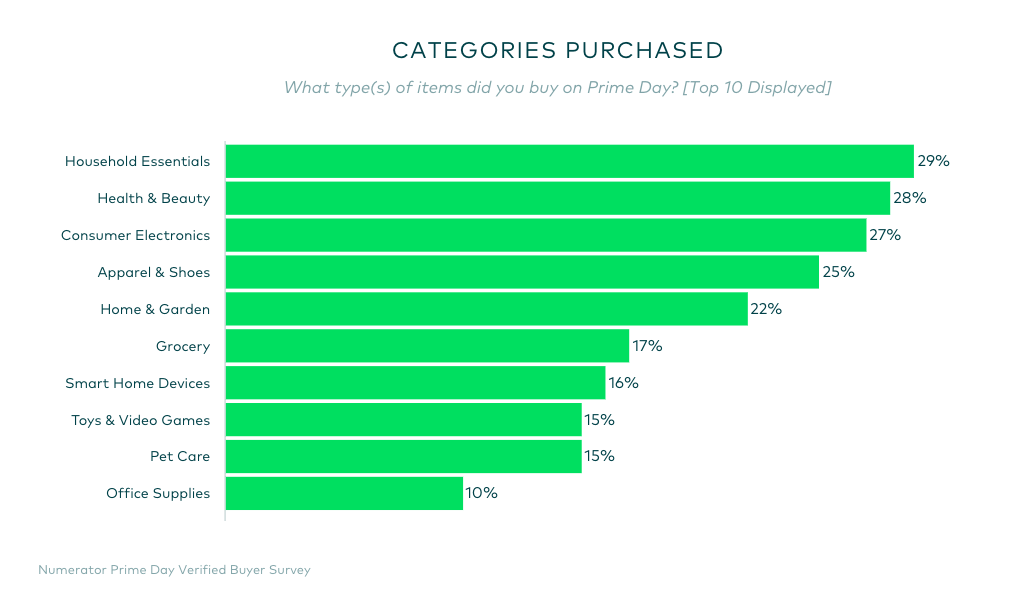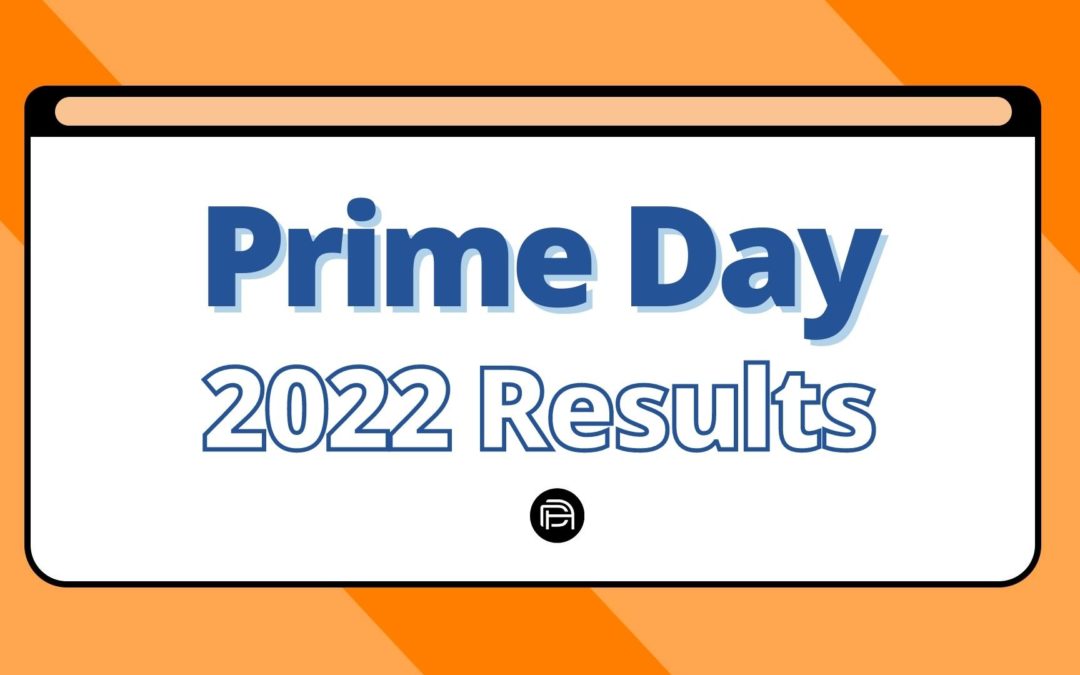Now that Amazon’s “biggest” shopping event in history has ended, Direct Agents has recapped the biggest wins and future learnings that brands can use to plan for Amazon’s next Prime Day scheduled in the Fall.
While many predicted that Prime Day 2022 would pale in comparison to the pandemic years, Direct Agents found the opposite was true: that heightened inflation did not stop shoppers from buying en masse, in fact, it was the “biggest” Prime Day event ever with over 300 million products sold. Inflation did influence the types of products that consumers purchased this year, with 83% indicating that this was a factor in their decision and 34% saying they waited for a discount to purchase a specific product (Numerator). Overall consumers chose home goods, consumer electronics, and Amazon-branded devices as the top buying categories this year.

Direct Agents also observed that the vast majority of consumers spent Day One researching for the best deals, and opting to eventually make their purchase on Day Two:
- 60/40% split between Day 1 and Day 2 for Page Views
- +18% increase in CVR on Day 2 vs. Day 1
Similar to recent years, other online retail giants launched their own promotions to coincide with Amazon Prime Day. Target, Best Buy, and Walmart all had their own shopping events during the week of Prime Day, with total online retail sales in the US surpassing $11.9B according to Adobe Analytics.
Direct Agents: Client Strategies and Wins
Below, we outline a few specific strategies and their successes that our brands saw this year:
Sports & Outdoor:
- Strategy: Lead-in coupons 2-3 weeks before Prime Day to increase sales velocity and therefore BSR and organic rankings. The goal was to have organic visibility at an all-time high during Prime Day, supported by curated and aggressive AMS advertising.
- Win: The brand saw a +98% increase in traffic which corresponded to a +370% increase in Ordered Revenue.
Board Games:
- Strategy: Ran Prime Exclusive Discounts to maximize visibility without paying a hefty deal fee that can be associated with Lightning Deals. These discounts ran for all of Prime Day, not just a 12-hour window, and still operated with an eye-catching blue “Deal” banner on Amazon.
- Win: The brand saw a +59% increase in Ordered Revenue and a +30% increase in Shipped COGs.
Medical Device:
- Strategy: Drove off-Amazon traffic from Facebook and Google Search through Amazon Attribution to build up page views prior to the event.
- Win: The brand saw a +460% increase in traffic and a +506% increase in Ordered Revenue.
Home Improvement:
- Strategy: Utilized Amazon Posts to increase organic traffic to the Brand Store and gain incremental Brand Store followers.
- Win: The brand saw a +44% increase in Brand Store Traffic.
Consumer Electronics:
- Strategy: Increased total number of promotions on their products by +41% and Amazon ad spend by +96%.
- Win: The brand saw a +258% increase in Ordered Revenue and a +100% increase in return on investment.
Looking Forward to the Fall Prime Day Event and Q4 Shopping Event
Even though Prime Day 2022 has come to an end, Direct Agents recommends that sellers plan for Amazon’s Fall Deal event as soon as possible. Amazon has announced a second Prime Day for 2022 with what they’re now calling a “Prime Fall Deal Event”, a Prime-exclusive shopping event (read more here). With key learnings taken from Amazon Prime Day, brands can now prep their strategy for on and off Amazon.
Based on our learnings, we recommend that sellers do the following:
1. Inventory Planning
FBA Shipping Deadlines:
One of the worst things that can happen to a seller on Prime Day is going out of stock. While Amazon has not yet announced a shipping deadline, we can definitely say that brands should carefully plan their fulfillment strategies ahead of time. For the US, the Inbound Shipping Deadline occurred on June 2, and consequently, the FBA Inventory Cutoff Deadline fell on June 20, both of these falling well before the actual event. In order to plan for the weeks leading up to the event, and Prime Day itself, Direct Agents recommends that brands forecast out ideal weeks of supply needed at least a month before the event, and expect increased storage costs.
2. Promotion Planning
Strategic Promotions with Product Margin:
When planning upcoming promotions for Amazon’s Prime Fall Deal Event and the BFCM weekend, it is crucial that your brand takes into account profitability as well as the increase in conversion rate that promotions tend to yield. This includes taking a look at your promoted listing’s COGS as well as the margin given from the cost of the promotion (fees plus cost of product). Brands should weigh the pros and cons of launching their upcoming promotions, especially with the recent increases to inflation.
Consider Mirroring Promotions Across Retailers:
As Prime Day has grown to other retailers in the form of competing deal events, shoppers now look across multiple platforms in order to find the best deal. Consider mirroring your promotions across several platforms in order to take advantage of the increased buying intent.
Marketplace experts at Direct Agents can help your brand prepare for Prime Day and other major e-commerce shopping events. Reach out at [email protected] today to get started.
Allison Eng, Sara Rosenberg, and Amira Desai, eCommerce Strategy Team, Direct Agents

